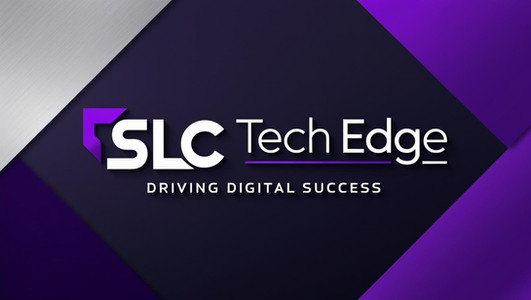How Nonprofits Leverage Salesforce Nonprofit Cloud to Achieve their Mission
- SLC Tech Edge

- Apr 11
- 4 min read
Updated: Jun 12
In today's fast-paced world, nonprofits face unique challenges that can hinder their missions. However, technology can make a significant difference. Salesforce Nonprofit Cloud is one of the best tools available to help nonprofits enhance their operations and impact their communities. With features like Program Management, Donation Tracking, and Marketing Automation, this platform empowers organizations to achieve their goals more effectively and efficiently.

Understanding the Significance of Salesforce Nonprofit Cloud
Salesforce Nonprofit Cloud is designed specifically for nonprofits, meeting their unique needs in managing operations. By integrating different functionalities into one platform, it allows organizations to streamline processes and optimize workflows. For instance, a study revealed that nonprofits using integrated technology reported a 23% increase in donor retention. This demonstrates how technology can enhance engagement, improve resource tracking, and bolster program management.
Moreover, nonprofits often grapple with challenges such as limited staff and fluctuating donor support. Salesforce Nonprofit Cloud can help organizations tackle these issues, ultimately leading to greater community impact. For example, a nonprofit that implemented Salesforce saw a 30% increase in volunteer participation by improving its communication and outreach efforts.
Program Management: Streamlining Operations
Program Management is a standout feature of Salesforce Nonprofit Cloud. This tool enables nonprofits to oversee their programs from a single location. Organizations can track interactions with clients, manage service delivery, and measure program outcomes effectively.
Through Program Management, nonprofits can align their activities with mission goals. By analyzing data, they can make informed decisions about resource allocation and program adjustments. For example, one nonprofit used data analytics to identify underperforming programs, which led to a 15% increase in service efficiency after realignment.
The user-friendly interface of Salesforce allows staff members to navigate the platform with ease. Teams can be trained quickly, enabling them to concentrate on mission-critical activities rather than technology struggles.
Donation Tracking: A Comprehensive Overview
Donation tracking can often be a complicated task for nonprofits. However, Salesforce Nonprofit Cloud simplifies this process. Its Donation Tracking feature allows organizations to monitor contributions, manage pledges, and automate thank-you receipts efficiently.
A key advantage of this feature is real-time donor engagement analysis. Nonprofits can segment donors by contribution levels, track historical giving patterns, and tailor their outreach strategies. For instance, a nonprofit that segmented its donor list observed a 20% increase in donations from engaged donors.
Additionally, real-time reporting enables nonprofit leaders to assess fundraising strategies swiftly. This flexibility is essential in a sector where donor motivations can shift rapidly. For example, nonprofits that adapted their strategies based on real-time data saw a 25% increase in campaign effectiveness within weeks.
Marketing Automation: Engaging Constituents Effectively
Effective communication is vital for nonprofit success. Salesforce Nonprofit Cloud's Marketing Automation tools allow organizations to connect deeply with their constituents. With customizable email campaigns, event promotions, and social outreach initiatives, nonprofits can streamline their marketing efforts significantly.
The platform enables personalized messaging, ensuring that communication resonates with different audience segments. Automating these processes saves time and allows staff to focus on advancing the mission. For example, one organization reported saving over 10 hours a week by automating routine communications.
Moreover, Marketing Automation plays a crucial role in donor appreciation. Nonprofits can send thank-you messages, updates on the impact of contributions, and invitations to events automatically. This type of engagement fosters stronger relationships and cultivates loyal donors. A well-engaged donor base can lead to recurring gifts, increasing overall funding stability.
Integrating All Features for Greater Impact
While features like Program Management, Donation Tracking, and Marketing Automation offer distinct advantages, their integration is where real power lies. Nonprofits that utilize the combined capabilities of Salesforce Nonprofit Cloud can gain a comprehensive view of their operations. This holistic perspective facilitates strategic decision-making and effective programming.
For instance, insights from Donation Tracking can inform Program Management by spotlighting funding areas that yield the best outcomes. Conversely, program outcomes can shape future fundraising initiatives, creating a continuous feedback loop. Such integration allows nonprofits to enhance their mission-driven activities, ensuring every decision is aligned with strategic objectives.
Embracing Technology for Mission Advancement
In an ever-changing landscape, nonprofits must adopt technological advancements to remain effective. Salesforce Nonprofit Cloud offers powerful tools that help organizations improve operations and deepen donor relationships.
By leveraging features like Program Management, Donation Tracking, and Marketing Automation, nonprofits can focus primarily on their mission. These tools streamline complex processes and provide valuable insights for better decision-making.
As the nonprofit sector evolves, those who embrace innovative solutions like Salesforce Nonprofit Cloud will be better positioned to tackle challenges and make a significant impact. Embracing technology is essential for nonprofits striving to fulfill their mission and create a better community for all.
Disclaimer: The insights, tools, and strategies shared in this blog post are intended for informational and illustrative purposes only and do not constitute formal business, financial, or technical advice. While the approaches discussed may have delivered measurable value in various contexts, each organization has unique processes, systems, and strategic goals. Decisions involving CRM platforms, Salesforce implementations, or broader digital transformation efforts should be made in consultation with qualified professionals. Misaligned solutions can result in technical debt, inefficiencies, or missed opportunities. SLC Tech Edge does not accept liability for outcomes resulting from independent actions taken based on this content. We strongly recommend a thorough assessment of your current infrastructure and business needs before adopting any new tools or strategies.







Comments